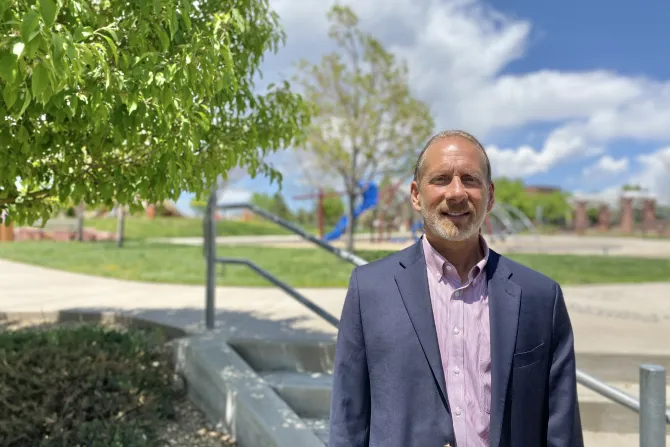“We went to the teachers and learned that the idea of trying to cram in one more program in the school day was overwhelming,” said Powers. “Every page in the curriculum is covered by a standard.”
DiLallo, Powers, and Bartholomew also reorganized the units and wrote a scripted facilitator guide to make it easier for the teachers to use.
The curriculum is divided into three units—“Servant Leadership,” “Pure in Heart,” and “Love Your Neighbor”—and uses common language throughout the program. The pieces of the program are designed to address areas in which today’s students are struggling, DiLallo said, notably leadership, interpersonal relationships, and prayer life. When those things are out of sync, mistreatment can occur.
“The important thing here is that we address the bullying issue, the mistreatment issue,” he said. “There is treatment and there is mistreatment that happens at school, which escalates things and causes contamination to the school culture.”
DiLallo prefers the term “mistreatment” to “bullying” because of the ambiguity and labels that can be associated with bullying. He also sees it in light of Mother Teresa’s philosophy of being pro-peace instead of anti-war, he said.
“Anti- movements historically do not work,” DiLallo said. “If we work in a direction of pro-peace, pro-social skills, and move in the direction of the behaviors that we’re looking for, we’re going to get somewhere.”
A parent guide and educator guide provide supplemental strategies to support the curriculum, and support student growth from home, as well as at school.
“Rather than looking at bullying as a problem, let’s look at it as an opportunity for formation,” DiLallo said. “How can we take all the characters involved—the student that mistreated, the student who was mistreated, the student who witnessed mistreatment, and any other students involved—and turn this into an incredible opportunity for formation, to learn and grow about themselves so that they can take this home and plant this huge seed of Christ’s compassion?”
Bullying Redirect uses both a “Safety Check” and a “Stress Check”, which provide quick access points for the students to articulate how they are feeling on any given day. The teachers can use this as a jumping off point for a further conversation or intervention if necessary. Embedded in the curriculum are techniques for students to self-regulate and reduce stress.
“The sooner we can get to our young people to give them the skills, and realize that these skills that help them take better care of themselves are sacred, the better the ripple effects are to the world,” Powers said. “We should get this out of the bully category and put it in marriage preparation. The whole thing is about communications, about how to look each other in the eye, be concise, and say ‘I’m sorry.’”
(Story continues below)
Subscribe to our daily newsletter
Incorporated into the lessons is the importance of prayer and silence. DiLallo provides meditations and personal affirmations to encourage reflection and connection with an inner sense of peace as part of the curriculum.
“The curriculum is really about slowing things down,” DiLallo said. “That’s how all of this is going to change. It’s only going to change with the compassion of Christ.”
Autumn Jones was a staff writer with Catholic News Agency through 2021. She is a graduate of Gonzaga University and the University of Colorado. She is based in Denver.






